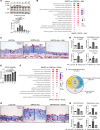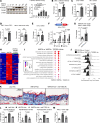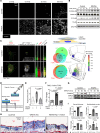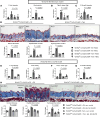Noncanonical WNT5A controls the activation of latent TGF-β to drive fibroblast activation and tissue fibrosis
- PMID: 38747285
- PMCID: PMC11093613
- DOI: 10.1172/JCI159884
Noncanonical WNT5A controls the activation of latent TGF-β to drive fibroblast activation and tissue fibrosis
Abstract
Transforming growth factor β (TGF-β) signaling is a core pathway of fibrosis, but the molecular regulation of the activation of latent TGF-β remains incompletely understood. Here, we demonstrate a crucial role of WNT5A/JNK/ROCK signaling that rapidly coordinates the activation of latent TGF-β in fibrotic diseases. WNT5A was identified as a predominant noncanonical WNT ligand in fibrotic diseases such as systemic sclerosis, sclerodermatous chronic graft-versus-host disease, and idiopathic pulmonary fibrosis, stimulating fibroblast-to-myofibroblast transition and tissue fibrosis by activation of latent TGF-β. The activation of latent TGF-β requires rapid JNK- and ROCK-dependent cytoskeletal rearrangements and integrin αV (ITGAV). Conditional ablation of WNT5A or its downstream targets prevented activation of latent TGF-β, rebalanced TGF-β signaling, and ameliorated experimental fibrosis. We thus uncovered what we believe to be a novel mechanism for the aberrant activation of latent TGF-β in fibrotic diseases and provided evidence for targeting WNT5A/JNK/ROCK signaling in fibrotic diseases as a new therapeutic approach.
Keywords: Dermatology; Fibrosis; Pulmonology.
Conflict of interest statement
Figures







References
MeSH terms
Substances
LinkOut - more resources
Full Text Sources
Molecular Biology Databases
Research Materials

